|
I put off getting Clark’s Growls Garden EP, which has an excellent Vertigo-inspired cover, because aside from the title track and the blissfully ambient “Farewell Mining Town,” too much of the EP felt like filler. Fortunately, Totems Flare includes “Growls Garden,” so the EP can go further down my list of eventual purchases.
107. Clark – Totems Flare 2LP – Warp, 2009 – $20
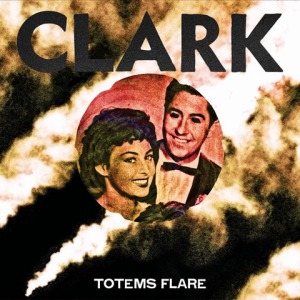
Totems Flare has received mixed reviews, but I view it as a return to form after 2008’s Turning Dragon. I use “return to form” here with a very specific meaning. Turning Dragon wasn’t a bad album, but its up-front blasts of techno valued aggression too highly, losing the range of the exceptional Body Riddle. If I enjoyed that style of electronic music more, I’d likely recommend it, but it simply didn’t have what appealed to me about Empty the Bones of You and Body Riddle. Totems Flare does. It returns to the range of Body Riddle, but brings the driving synth lines from Turning Dragon and a surprising amount of vocals along. (This paragraph would be much clearer as a graph.)
Those vocals are the love-it-or-leave-it aspect of Totems Flare. On “Growls Garden,” they switch between a gothic voiceover and a calm singing voice; on “Rainbow Voodoo” they get precariously close to electro-jive; on “Look into the Heart Now” they’re masked by vocoder; on “Talis” and “Suns of Temper” they’re delivered with a surprising level of emotional resignation. The distance between these deliveries is enormous and so is my response to them; I love the vocals on “Talis,” begrudgingly endure them on “Rainbow Voodoo,” and barely notice them on “Look into the Heart Now.” Yet a big reason why I enjoyed Body Riddle so much is the unpredictability of its structure and sonics. Can I fault Clark for taking the same approach for his vocals?
The music on Totems Flare is full of left turns as well. I was all ready to declare side B, which contains “Look into the Heart Now,” the creepy funhouse music of “Luxman Furs,” and the revolving electronic door of “Totem Crackerjack,” a future skip, but all three of these songs change course in interesting, unexpected ways. The final minute of “Totem Crackerjack” alone goes from pulsing electronic resolve to ambient outro to echoing piano close. The constant melodic escalation/acceleration in “Future Daniel” is a highlight of Totems Flare, but even that song spends 30 seconds of its runtime dissolving into a pale reflection of itself. The acoustic guitar closer “Absence” might be the biggest surprise on the album, since, as its title indicates, there are no beats, no synthesizers, no vocals.
Totems Flare isn’t a perfect album, nor does it surpass Body Riddle for my favorite Clark release. (Editor's note 10/3/2010: It sure has.) Yet it’s constantly challenging, constantly interesting. I suspect that I’d ignored side B in part because of its lack of prominent vocals, since negotiating with these elements is a huge part of the Clark listening experience. I’d love to successfully predict where he’ll go next, but like Chris Jeely of Accelera Deck, there’s almost no limit to the possibilities.
|
|
One thing I love about T.T. the Bear’s: they post set times on the calendar page of their web site. Seven or eight years ago I would’ve been to the venue early, ready to get my money’s worth and see every band, but as I approach 30, I just want to see the band I care about and go home. Sure, I’ll see the occasional opener, since it’s easy enough to listen to a minute of an unknown opener’s song on MySpace and decide if they’re worth an hour of my time, but I’ve stood through enough excruciatingly boring/derivative/awful bands in my life to gladly accept any way out of that situation. Hell, for this show I didn’t even have to stay out too late, since New Zealand garage rockers the Datsuns headlined, and I was all too happy missing out on their set. Crotchety old man night!
As I mentioned in my review of Future of the Left’s Travels with Myself or Another, I’m regrettably late to the Andy Falkous party, which means that he’s going to spear my back with his headstock, bellow some foul things about immediate family members, and use my name as evidence in a future song. Not that I’d mind any of that, since Mclusky and Future of the Left are founded upon an intoxicating combination of dark humor and impending violence, and the latter’s tendency to use real names in their songs might earn me indie rock infamy.
Future of the Left’s set initially stumbled due to sound issues during personal favorite “Arming Eritrea,” but they soon plowed through an excellent set of songs from both LPs. “Land of My Formers” was a particular highlight, but the periodic bursts of incoherent noise coming from Falco’s mouth can make any song memorable.
A brief anecdote about the crowd: to little surprise, a Future of the Left show is a total sausage party, even devolving into a mosh pit later in the set. Yet the highlight came from one of the few ladies in attendance. A couple was standing near me, and it was painfully obvious that he’d probably said something like “Hey you’ll love this band! They’re right up your alley!” knowing full well they’re not or “But I went to see the Great Lake Swimmers with you!” resulting in his girlfriend being dragged along. Her pouting faces culminated in a great under-the-breath comment: after Andy Falkous made another humorous, likely insulting aside between songs, she scoffed, “You know, not everything is funny when you have an accent!” It’s too bad she didn’t say it loud enough for Falkous to hear, or perhaps good for her boyfriend, whose shame would’ve filled T.T.’s.
106. Future of the Left – Curses LP – Too Pure, 2007 – $15

As great as Travels with Myself and Another is, I suspect that part of the critical fondness for it stems from sleeping on Curses, a great album on its own accord. Switching from the departed Mclusky to his new group, Future of the Left, Andy Falkous must’ve suffered through brand development and recognition issues. “You mean there are keyboards now? And the name is different?” Beyond those betrayals, the differences between Mclusky and FOTL are relatively minor: drummer Jack Eggleston remains, but former Jarcrew bassist Kelson Mathia takes over for Jonathan Chapple, who formed Shooting at Unarmed Men. The songs are cleaner and tighter. That’s about it. If you enjoyed the snotty indie punk of Mclusky and Falkous’s sense of humor, you’re bound to like Future of the Left.
Curses starts off with the grinding, abrasive “The Lord Hates a Coward,” which contains both a choice non-sequitur (“She’s got a lot of pickled onions / Hanging from her thighs”) and a potentially inflammatory chant of “Violence she solved everything.” Single “Manchasm” uses that dreaded keyboard in a tale about Welsh recording studio owner Mark Foley, which changes midway to embrace a vocal round of “Colin is a pussy / A very pretty pussy cat.” “Suddenly It’s a Folk Song” turns a woozy keyboard part into a surprisingly melodic admission that “Suddenly folk songs are part of our future.” “Kept by Bees” thumps along with vocals and drums only for most of its runtime, a minimalistic songwriting trick that sounds a bit like an evil Broadway song. “Adeadenemyalwayssmellsgood” is a highlight of their live set and sounds equally enormous here, starting with a layered “Roll on…” and swooping in for the kill with a Kelson Mathias scream.
Curses isn’t quite as consistent as Travels with Myself and Another—“Fuck the Country Alliance” plods too much, “Team : Seed” would be better off as a b-side, and the aptly titled piano closer “The Contrarian” is more of a temporary amusement—but I’ve gone back to it countless times, so these missteps aren't too damaging. If you enjoy Mclusky Do Dallas or Future of the Left’s Travels, there’s no reason to avoid this album.
|
|
I’d never been to Nuggets before, but I saw a spot open in front of the store on my way back from the doctor’s office and, as a reward for actually getting one of my hockey injuries checked out, made an impromptu visit. I soon realized that I shouldn’t have fed the meter the rest of my quarters, since I would have needed every last one if I’d wanted to buy something.
Forty bucks for the Smiths’ Meat Is Murder? I got that LP at RRRecords for $4.50 two years ago. Twenty dollars for a Regulator Watts LP? I got one for $4.50 at Mystery Train a few weeks ago and I doubt there was a rush. If I’d taken notes instead of an anti-inflammatory drug, I could regale you with other examples of in-city overpricing (lots of $30, $40, and $50 LPs for bands without noted cult followings like the Smiths), but Nuggets makes In Your Ear and Looney Tunes seem like bargain outlets. Do I understand that the proximity to Kenmore Square necessitates such pricing? Sure. Was their stock fresh enough to justify it? Oh hell no.
I looked through every rock LP, most of which would have been dollar bin candidates at Stereo Jack’s, and the only one I remotely considered purchasing was Füxa’s Three Field Rotation for $12.99. I already own Venoy, their contribution to Darla’s Bliss Out series, and it’s not exactly in my heavy rotation pile, so I passed. Filing the soundtrack for Married to the Mob under both Brian Eno and the Feelies is a cheap trick to pad artist dividers, much like the inclusion of early 1990s magazines covering a given artist. I skimmed their jazz vinyl with no luck, finding a best-of compilation for John Coltrane for a whopping $20. If I’ve learned anything about jazz LPs, it’s to avoid such compilations, something that has been confirmed by their entry-level pricing at virtually every other record store I frequent. I couldn’t even get at their barred-off understock, not that I was optimistic about any potential finds.
With any used record store, the stock could be considerably better on a later visit, even if it’s just one record you’ve been hunting down, but Nuggets didn’t fill me with optimism that it would ever happen (or that the album wouldn’t be 4x eBay prices when I find it). It’s unfair to compare its selection and prices to an out-of-the-way store like RRRecords or Mystery Train, but Looney Tunes proves that an in-city store can maintain the stock turnover necessary to justify the increase in prices.
|
|
I first visited RRRecords when my friends Howard and Scott invited me on a trip up to Lowell to visit the store and see the nearby Jack Kerouac exhibit, which displayed the original scroll of On the Road. I learned a few lessons about RRRecords during that first visit: one, always call ahead to make sure Ron is there and that the store is open; two, no, really, call ahead with a specific time; three, it’s a haven for noise music; and four, bring cash. We ended up wandering around Lowell because we visited during Ron’s lunch hour, but once we got in the store I immediately wished I’d brought more cash. Even without a penchant for noise music there was more than enough for me to get excited about—if memory serves, I picked up a long-desired 2LP copy of Dirty Three’s Ocean Songs and $4.50 copies of David Bowie’s Low and the Smiths’ Meat Is Murder. While this trip wasn’t quite as astonishing of a deal, five solid LPs for $35 total is worth a visit to Lowell.
101. Thelonious Monk – Monk’s Dream LP – Columbia, 1963 – $8
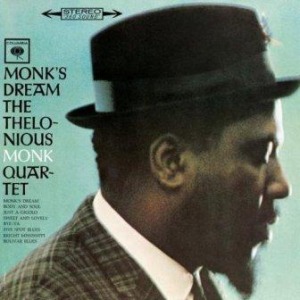
I went up to RRRecords with the intent to purchase at least one jazz album, whether original or reissue, since the stock is usually good and reasonably priced. This in-shrink reissue of Monk’s Dream was a mere $8, a few bucks cheaper than any of the jazz selections at Newbury Comics. I only had one Thelonious Monk LP in my collection, a worn copy of Monk in France from a dollar bin, and he seemed like a worthy candidate for expansion. His piano style isn’t flashy, rather insistently idiosyncratic, veering off in unexpected melodies without losing track of a song. A few of the keywords from the sleeve notes are “fun” and “humor”; there’s a welcome lightness to Monk. It’s excellent background music, but particular elements reward closer attention, like the percussive trills near the end of “Sweet and Lovely.” Monk is also a remarkably deferential bandleader, letting tenor sax player Charles Rouse take the lead on the title track.
I have to note that Monk’s Dream, his first LP for Columbia, primarily features music that he had previously recorded and released on other labels. Given that other jazz luminaries like Miles Davis, Ornette Coleman, and John Coltrane were focused on releasing all-new material, pushing themselves further with each set, it’s a bit of a disappointment that Monk’s Dream is a mid-career best-of (best certainly applies; nothing here feels unnecessary), but perhaps Monk was fine with progressing his style on existing material. It’s a strange concept for someone so ensconced in rock music, but standards were kept fresh in jazz for a reason.
102. Terry Riley – A Rainbow in Curved Air LP – Columbia, 1967 – $8
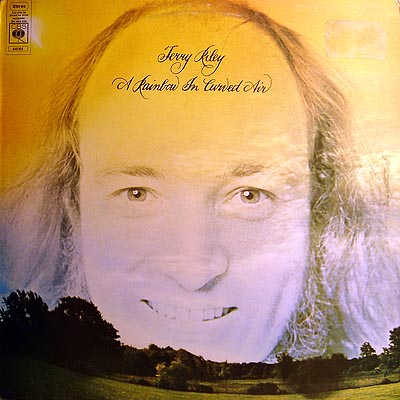
In my seemingly endless search for Steve Reich LPs, I may have ignored his peer in minimalist music, Terry Riley. Reich, Riley, and Philip Glass form the triumvirate of contemporary composers associated with the minimalist movement in the public eye, although Glass has attempted to distance himself from its trappings. I own one other Terry Riley album, The Harp of New Albion, a solo piano endeavor from 1986 that explores the possibilities of just intonation, but A Rainbow in Curved Air carries more historical renown, second only to In C in his catalog. Rainbow is certainly more striking than Harp, sounding like a colony of bees swarming around a piano. The title track’s rolling, shifting synthesizer lines inspired Pete Townshend’s parts in The Who’s “Won’t Get Fooled Again” and “Baba O’Riley” (note the titular reference), but I prefer the less pointed instrumentation (organ, saxophone, tape loops) on the other piece, “Poppy Nogood and the Phantom Band.” “Poppy Nogood” was originally performed in a six-hour concert and later released in a somewhat longer version, but the twenty-one minutes here are trance-inducing. Both compositions remind me of Reich’s later Music for 18 Musicians, but with more emphasis on improvising the recurring patterns.
I suspect various factors contributed to Glass and Reich overtaking Riley in terms of popular appeal—the former collaborates with pop stars and scores films, the latter’s works are both dense and short enough to be perfect for album-length recordings and frequently touch upon political and cultural unrest—but overlooking Riley isn’t a mistake I’ll make again. First, however, I’ll have to find out which recordings come most recommended, something that’s never been an issue for Reich’s catalog. Starting with A Rainbow in Curved Air would’ve been a wise decision.
103. Sonic Youth – Rather Ripped LP – Geffen, 2006 – $5
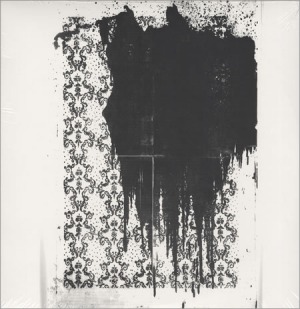
Sonic Youth forms the musical backbone for many indie/alternative guitar-rockers, but they’ve never attained that status for me. I’ve logged countless hours with Daydream Nation and lesser amounts of time with Sister, Goo, Dirty, and Washing Machine, with smatterings of their other records, but I’ve never counted them as one of my favorite groups, never rushed out to buy their new album, never seen them live. The last admission might be the most startling, but I don’t recall them playing Champaign during my college years, and I had to be excited about a band to make the drive up to Chicago. It's possible that seeing them live would do it, but their shows aren't exactly bargain priced.
Here are four logical points when I could’ve gained that level of excitement for Sonic Youth: 1. The group appears on The State’s CBS special, performing a truncated version of “The Diamond Sea.” It’s beautiful in an unfamiliar way and completely unexpected for network TV. 2. I get a copy of Daydream Nation from Columbia House and hear “Teenage Riot” for the first time. It’s an awesome song, but I get stuck on it and don’t absorb the rest of the album for a while. 3. A high school classmate does a presentation on the group in senior year public speaking, playing parts of their earlier works (which I did not care for at the time) and their more recent work. I wasn’t friends with the guy, which is baffling to me now. 4. I read (and reread) Michael Azerrad’s Our Band Could Be Your Life, which prompted investigations or re-investigations into groups like Minor Threat, Fugazi, Misson of Burma, Dinosaur Jr., the Replacements, and Minutemen. All of these moments should’ve spoken more to me, should’ve pushed Sonic Youth up higher in my personal musical hierarchy, but didn’t quite do it. I gained an appreciation for Sonic Youth, but not a love.
So what stopped it from happening? Here are my six best guesses: 1. The members of Sonic Youth always seemed too cool for me, especially when they hosted 120 Minutes. That show introduced me to groups like Jawbox, Girls Against Boys, and Shudder to Think, but I suspect that either strange songs, weird personalities, or terrible videos delayed my fondness for later favorites. (Stereolab, I am looking at you.) Thurston and company appeared on the show with an aloofness that was a fuck off to anyone who didn’t care and a fist pump for those who did. Stuck in between, I didn’t know how to respond. 2. Speaking of too cool for their own good, Kim Gordon’s vocals annoy me 75% of the time. I do not feel alone in this sentiment. What I wouldn’t give to trade some of these songs for Lee Ranaldo vocals. 3. I should’ve heard Goo or Sister after Daydream Nation, not Washing Machine. 4. Given how important Sonic Youth were to 1980s independent rock and how much they evolved (no pun intended) during that decade, it would’ve been a lot more exciting to follow them then. 5. Sonic Youth’s vocals and lyrics often emphasize their art-scene detachment over the emotional undercurrent of many of my personal favorites. 6. As much as I respect them for constantly changing their approach, it causes them to often ignore their strengths in favor of noisy indulgences or unnecessary tangents. That I am complaining about tangents regarding Sonic Youth should be a huge sign that I’m probably never going to “get” them in the way that some friends of mine do. (Hello, Joe Martin.)
At this point I’m happy sticking with Daydream Nation, Sister, and Goo, with specific songs from the other albums (I almost forgot about their DVD, which is actually quite enjoyable throughout) and an occasional spin of SYR1: Anagrama, no longer forcing the issue with the group as a whole. Yet I’ve still picked up two cheap LP copies of Sonic Youth albums from RRRecords, first A Thousand Leaves last year, now Rather Ripped. Is it the value? Is it the lingering hope that one of these albums will click? Who knows. Like almost all of their recent records, Rather Ripped was lavished with praise upon its release, meaning that I had to dutifully ignore recommendations from friends to check it out ASAP. I’ll take my sweet time, thanks.
On the surface, Rather Ripped is a marked change of pace, filled with tidy track times and focused songwriting. There’s still plenty of trademark left turns to be found, but in general, they close out their stay on Geffen with an atypically approachable album. The first three tracks are great, Moore’s “Incinerate” in particular, but “Sleepin Around” and “What a Waste” have grating hooks that I’d love to pull from my brain. The rest of the record is solid, if not quite mind-blowing. The main problem is ironic, given issue #5 above. Usually I want less fucking around from Sonic Youth, this time I wanted more. Trim a few annoying songs, spread out more on a few of the good ones, and it’s a noticeably better album. As is, it was worth the $5 and will likely get more spins than A Thousand Leaves.
104. Archers of Loaf – All the Nations Airports LP – Alias, 1996 – $8

I had my choice of Archers of Loaf’s All the Nations Airports and Girls Against Boys’ Cruise Yourself for my classic 1990s indie rock double dip purchase. Airports isn’t the picture disc edition and Cruise Yourself wasn’t the first pressing with the “Red Bar” single, so I opted for the album not missing any bonus tracks. It’s all about the music, see.
Aside from the completely superb Vs. The Greatest of All Time EP, it’s been quite a while since I’ve listened to an Archers of Loaf album in full thanks to my 24-track best of compilation, Calling Out the A&R. Don’t view this habit as an indictment of the group’s albums—there are plenty of great tracks missing from my compilation, many of which I’ve seen on “competing” attempts to condense the Archers’ brilliance into a single disc—but like Pavement (and, to a lesser extent, Polvo, both of whom have earned similar compilations), AOL has such tremendous highlights that it’s impossible not to focus on classics like “Web in Front,” “The Lowest Part Is Free,” “Harnessed in Slums,” “Scenic Pastures,” and “Fashion Bleeds.”
So what about their albums? Icky Mettle’s penchant for lo-fi noise turns some away, but it’s hard to top its combination of raw, spontaneous energy and polished hooks. Eric Bachmann commented directly on this energy in a 2005 interview—“When we first came out we had that energy. It's a weird thing that you can't put your finger on...I listened to Icky Mettle, and I almost cringe when I hear it.” I suspect he’s particularly embarrassed by amorphous moments like “Toast,” but I’ll gladly accept such indulgences if it gets me the oblique pop of “Web in Front” and the noisy intensity of “Backwash” in return. Vs. the Greatest of All Time is a tidier five songs and seventeen minutes, but those five songs are all stand-outs. (If only they’d included the tighter version of “Revenge” from The Speed of Cattle with two fewer minutes of spaghetti western noodling.) Vee Vee makes a jump in fidelity and structure without losing inspiration or bite, but I tend to lose focus during the second side. Airports, their first album with major label distribution, holds together better than any of their other releases, but doesn’t quite hit the highs of its predecessors. The rarities compilation The Speed of Cattle is among the finest of its kind, featuring plenty of glorious b-sides and a few superior alternate takes of album tracks. White Trash Heroes, their 1998 swan song, is more commendable than many other final statements from 1990s indie rockers (cough, Shapes, cough, Terror Twilight) because of its stern adherence to exploring new stylistic territory, but only half of the album’s songs are actually good. Only White Trash Heroes and The Speed of Cattle encourage a best-of compilation, but Icky Mettle and Vee Vee certainly look better through the rose-colored glasses of their strongest songs.
Returning to All the Nations Airports on vinyl makes sense, since it’s defined by how the pieces fit together. Putting the arrival and departure times on the back of the albums for each song, including the length of the pause between them, isn’t just a mark of aesthetic consistency—it’s a huge tell for the importance of the album’s sequencing. The brief “Strangled by the Stereo Wire” ends abruptly and then jumps into the title track like a well-rehearsed trick of their live set. “Worst Defense” blurs into “Attack of the Killer Bees.” The absorbing piano ballad “Chumming the Ocean” is an absolutely perfect closer for side A, necessitating a brief pause before you flip the LP over. There’s a noticeable pause between the western-informed instrumental “Bumpo” and the introspective churning of “Form and File.” Sandwiching the desperation of “Distance Comes in Droves” with a pair of instrumentals, “Acromegaly” and “Bombs Away,” ends the LP on a high note. Thanks to this superb sequencing (and the strength of the individual songs), Airports turns potentially token elements like the piano ballad and the transitional instrumentals into the standouts.
Airports’ strengths—consistency and sequencing—are at odds with the best-of approach, which might have lowered the album’s status when viewed through the lens of my compilation. That doesn’t excuse the lack of a “Harnessed in Slums” (“Chumming the Oceans” equals its quality but not its tempo), but it certainly makes the double dip more rewarding than the usual “But it has bigger artwork!” rhetoric.
105. Volcano Suns – Thing of Beauty 2LP – SST, 1989 – $6
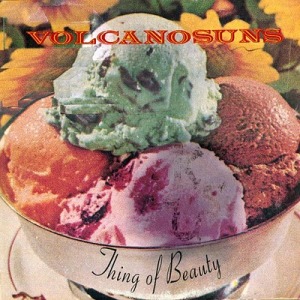
Even after catching up with All Night Lotus Party with Record Collection Reconciliation, I still have an unplayed Volcano Suns album in my collection (Bright Orange Years), but I decided to pick up Thing of Beauty anyway. I often see Volcano Suns at Looney Tunes for $15 or $20 (as I’ve mentioned before, Peter Prescott used to work at their Cambridge location), so finding a double album for $6 seemed like a steal.
There’s no doubt that Thing of Beauty is a double album. There are stray tracks like the meandering “No Place” and the fourth side is padded with an enthusiastic cover of Brian Eno’s “Needle in the Camel’s Eye” and the CD pressing adds MC5’s “Kick Out the Jams” and Devo’s “Red-Eye Express.” (Tangent: I wouldn’t mind if 2LP sets with the fourth side left blank added b-sides or bonus covers; just leave them unmarked on the sleeve. Why waste the vinyl?) On the whole, Thing of Beauty is more melodic, less aggressive than All Night Lotus Party, but it’s not a drastic reversal. It’s also noticeably more democratic than ANLP, letting bassist Bob Weston (producer for Rodan’s Rusty and Shellac bassist) and new guitarist David Kleiler write and sing their fair share of songs, which adds different voices and pads the runtime. It’s strange that drummer/vocalist Peter Prescott is the lone remaining member from their first incarnation, but one spin of the brawny Mission of Burma-esque opener “Barricade” suggests that he had the rights to that brand of post-punk. If Thing of Beauty had twelve strong tracks instead of twenty, I’d put it on again in a heartbeat, but it’s begging for a reprogrammed track listing.
|
|
Stereo Jack’s could’ve easily made a few appearances on this list (always coinciding with a trip to the nearby Boca Grande for a beef birria burrito), but on most visits I come out empty-handed. If I were more knowledgeable on jazz, perhaps that wouldn’t be the case, since their just-in bin is dominated by jazz and classic rock. I occasionally found a keeper in their stacks (Spinal Tap LP, Rex’s Rex for a few bucks, a Cocteau Twins LP) and today the winner was a copy of Boys Life’s Departure and Landfalls. Five bucks is a steal, but it also brought up the whole “Ten dollar minimum for credit purchases” issue, so without any cash on me, I opted to buy some cheap filler rather than venture off to an ATM. I searched through almost every LP in the hopes of finding a $5 LP I wanted to hear, but the highlights of the rock vinyl were things I already own (Colin Newman’s A-Z, Brian Eno’s Music for Films, L’altra’s Music for a Sinking Occasion), the jazz highlights were more expensive, and the seven-inches were overpriced, so I grabbed two cheap bin CDs and an Oscar Peterson LP for my wife.
97. Boys Life – Departures and Landfalls LP – Headhunter, 1996 – $5
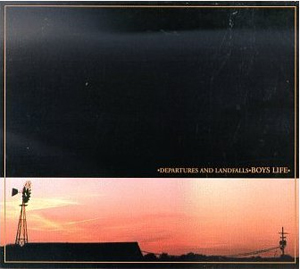
Boys Life is one of the few Midwestern rock staples that I never got into, despite being highly praised by everyone else remotely interested in the scene. Why the delay? One pragmatic reason and one kneejerk reason: I simply didn’t run into their albums in stores and I associated them with the irritating bits of Crank! emo that I’d heard. The former issue has since been resolved by Mystery Train and Stereo Jack’s, respectively. That latter aspect is hard to admit in retrospect, but Brandon Butler’s vocals are the weakest part of Boys Life, which is par for the Crank! course. I fully expect people to call me out on this point, but think of it this way: how many bands sing like this nowadays? It’s all mid-1990s emo vocals, which involves mumbled verses (Soo-young Park style), surprisingly melodic choruses, and straining bridges. If I’d heard Departures and Landfalls in 1996, maybe I’d ignore this aspect or even cherish it as genuinely emotional (which, I suppose, it still is), but it’s not like I can go back to Hum’s Electra 2000 and not cringe when Matt Talbott reaches for notes on “Scraper.” The reality is that neither vocalist is consistently poor, nor do they ruin the otherwise excellent music on their respective albums, but there’s a reason why they kept getting better at singing on future records. Anyway.
Departures and Landfalls didn’t fully sink in until I gave it a focused listen with headphones. The first two songs, “Fire Engine Red” and “All the Negatives,” are up-tempo rockers with jittery nerves and jagged chords, but from there Boys Life spreads out and embodies the space that the Midwest has to offer. C-Clamp is my go-to band for picturing the drive through Illinois cornfields on I-57 from Chicago to Champaign, but that image has a specific time stamp. The golden guitar tones of Meander and Return work best along with a sunset, but the periodic growl of Boys Life’s guitars fit with a late evening drive. “Twenty Four of Twenty Five,” “Radio Towers,” and “Painted Smiles” all stretch out in quiet, determined ways, building toward an eventual explosion of light and then a gradual darkening. Bob Weston’s production is perfect for this record, giving it the necessary dynamic range to capture both ends of this spectrum. Weston fills Departures with nice touches like the ghostly echoing drums on “Sleeping off Summer,” the crickets in “Painted Smiles,” and his own trumpet on the same track. Butler’s vocals work best on these dynamic tracks, since he’s not forced to yelp over churning guitars. When he sings “Let me out of here today” on “Sleeping off Summer,” it’s a perfect blend of resignation and pleading. Departures and Landfalls didn’t grab me as quickly as I thought it would, but there’s no debating whether its placement in 1990s Midwestern rock is deserved.
Side note: I just noticed that Boys Life frontman Brandon Butler went onto form Canyon, a DC-area rock group whose self-titled debut was one of the CDs I reviewed back in my Signal Drench days. Furthermore, that record featured John Wall, the drummer from Kerosene 454 who kicked ungodly amounts of ass in that group. Butler was also in the Farewell Bend, a group who shared a split single with Shiner on DeSoto. I should probably unearth Canyon and track down that Farewell Bend full-length, huh?
98. Oscar Peterson Trio – Tristeza on Piano LP – MPS, 1972 – $2
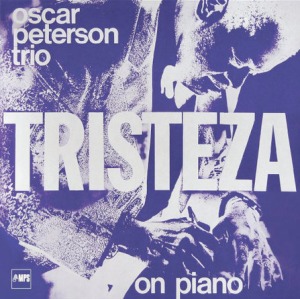
When I met my wife during our freshman year of college, she had a fairly small binder of CDs. It was a mix of alternative rock she’d gleaned from Chicago radio, jazz that she’d heard from her parents and grandparents, and a few older favorites like the Beatles. She wasn’t as obsessed with music as I was/am, but she was intrigued by the existence of thousands of other bands that she’d never heard of, which was a huge step up from the usual scoffing of my high school classmates. That started my “I think you’d like this band, even if they’re not exactly my favorites” habit, which I believe started with the Get-up Kids. I’ve since learned to be far more careful with this habit, since there’s only so much feminine indie folk I can take at a given time. Fortunately I’ve found a reasonably large middle group in our tastes, usually encompassing non-aggressive indie rock, post-rock, and electronic music, while excluding hip-hop and metal. (She just confirmed this divide.)
I do think of my wife’s tastes when I’m out record shopping, however, and I picked this album up because of my wife’s fondness for Oscar Peterson, not knowing much about Peterson’s career arc. (If it had been an album called Oscar Peterson Trio by the post-rock group Tristeza, I would have been far better prepared.) My wife’s tastes in jazz differ heavily from mine; she doesn’t share my growing fondness for free jazz or fusion, instead preferring Peterson, Milt Jackson/the Modern Jazz Quartet, and other pianists like Thelonious Monk and Ahmad Jamal, Monk being a nice point of convergence.
I held off on listening to Tristeza on Piano until she was listening and could share some of her feelings on the album. From the first few paragraphs of the liner notes discussing the Brazilian flavor of the title track, I expected something different, but “Tristeza” is actually ridiculously fast jazz piano. I coined it “speed jazz,” which my wife viewed as a slight to Peterson’s technical prowess, which is pushed to its limits on that song and “Nightingale,” the only song on here that he composed. “Nightingale” does have some more typical Brazilian percussion, but both songs are driven by Peterson’s blazing hands. My wife was particularly impressed by his accuracy in these songs, since neither comes off as too fast or sloppy in the least. This style pops up occasionally during the rest of the album, but later songs like Gershwin’s “Porgy” and Jobim’s “Triste” have a more familiar pacing to what I’d heard from Peterson. My wife was impressed by both styles, but when pressed, she admitted that she preferred the more soulful style on the slower tracks, and I’ll agree with her on that point. I would’ve liked another original composition or two on the LP, but my wife was fine with hearing his rendition of “Fly Me to the Moon.” All told, she enjoyed Tristeza on Piano but wasn’t floored by it, and I think I’m in a similar state. Well worth the two bucks, at least.
I hadn’t noticed this before listening to the album, but Wikipedia notes that Tristeza on Piano was Peterson’s “eulogy of the recently deceased Jimi Hendrix and Janis Joplin, the Monterey Pop Festival stars.” I have a hard time processing exactly how it eulogizes them—the accelerated technical prowess of “Tristeza” and “Nightingale” certainly impress like Hendrix’s solos, but there’s no mention of it in the liner notes and nothing in the music itself that felt mournful.
99. Medicine – Shot Forth Self Living CD – Def American, 1992 – $2

I picked up this CD because of its constant mentions in “underrated shoegaze albums” discussions and it certainly delivers on my expectations. Female and male vocals, loads of gauzy guitar feedback, periodic bursts of white noise, some stretched-out compositions (the opener “One More” and the closer “Christmas Song” each go past eight-and-a-half minutes), and sweet pop hooks floating through the mist: calling Medicine a Los Angeles version of My Bloody Valentine isn’t far off. Those long tracks are the highlight, but the short, seemingly radio-friendly “Sweet Explosion” and “Defective” probably got them signed. I suspect that fellow Californians the Lassie Foundation hold this album dear, since a number of these guitar sounds recall moments from that group’s excellent 1999 album, Pacifico, minus the Lassie Foundation’s twee inklings, of course. Shot Forth Self Living is too structured to be pure shoegaze and too woozy to be stock 1990s alternative, but the drifting middle-ground between the two genres makes for an intriguing listen.
I’m tempted to scan in the artwork and annotate every facet of the art that’s typical to early 1990s major-label cut-out alternative rock. There’s the vague cover art, likely a negative of a photo of their favorite bar. There’s a colorized panel of a playground with an overlay of unconnected photos. There’s little consistency in terms of a color scheme. Even the all-caps font for most of the text (like they’d only use one font!) seems stereotypical to the era. My preference for vinyl is quite apparent, but the three-panel art of Shot Forth Self Living must’ve been designed with the confines of the compact disc in mind.
100. Versus – Two Cents Plus Tax CD – Caroline, 1998 – $2
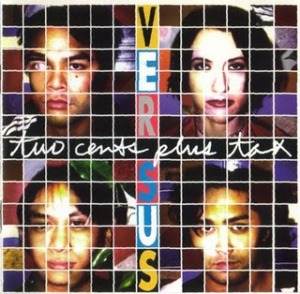
Versus recently played a reunion show in Boston with a guest appearance from Unrest frontman Mark Robinson, but I passed on attending. While I enjoy the fuzzy indie rock of 1994’s The Stars Are Insane and parts of the more polished, but less compelling Secret Swingers (specifically “Lose That Dress,” “Glitter of Love,” and “Ghost Story”), Versus lost my interest as they gained fidelity. I’d heard a few songs from Two Cents Plus Tax early in the file-sharing era and enjoyed “Radar Follows You,” lazy rhyming and all (a consistent problem for Versus lyrics), but I missed the dynamics of “B-9” (which I first heard on the soundtrack to Half-Cocked, a fine indie-rock compilation) and the lilting pop of “Circle” and “Blade of Grass.” By the time of their 1999-2000 stint on Merge, I felt like they’d outstayed their welcome, especially given the number of 1990s indie rock bands who split around that time: Pavement, Archers of Loaf, Polvo, Seam, etc. Perhaps as penance for my MP3 of “Radar Follows You,” I grabbed this cheap copy of Two Cents Plus Tax for two bucks plus tax, hoping that I’d given the group enough time to sound fresh, but unfortunately it’s pretty much what I expected. At the very least it reminded me to give The Stars Are Insane a few spins in late summer, since it’s tailor-made for that season.
|
|
I have a love/hate relationship with mail order. I owe a key chunk of my music collection to shipments from Parasol Mail Order, Newbury Comics, and the now defunct CDNow and Music Boulevard, since they granted me access to independent rock staples that I couldn’t find at either the nearby Rhino Records or Circuit City / Media Play / other defunct big box stores in high school. Yet as I’ve grown accustomed to shopping at record stores, including Parasol in Champaign and Newbury Comics in Boston, I’ve had less reason to rely on mail order, and with the threat of Somerville mail thieves, I dread the potential of an unsuccessful delivery. Maybe once I have a house in the suburbs [editor’s note: i.e., now] it’ll be a less pressing concern and I’ll return to my mail-ordering ways, but I’d much rather go out to a store and press my luck with stock than place an order and press my luck with neighborhood kids. If you’re willing to steal a copy of Rachel’s Systems/Layers, I’d consider limited edition vinyl fair game as well.
I’d mentioned this particular limited edition vinyl before, but it’s worth mentioning the specifics again—three colored LPs in a triple gatefold sleeve with embossed artwork. Mylene Sheath deserves special praise for one-upping vinyl-oriented labels like Temporary Residence and Hydrahead. (Okay, the Eluvium box on TRL is impossible to one-up, but still.)
96. Constants – The Foundation The Machine The Ascension 3LP – Mylene Sheath, 2009 – $25
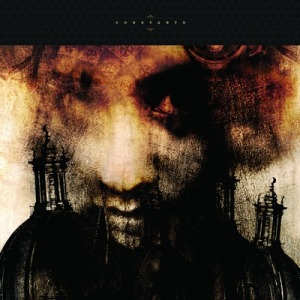
Constants’ aesthetic blueprint could’ve been drawn from various parts of my brain. Take the churning space rock of Hum and Failure, add in the weight of post-metal groups like Isis and Pelican, then pull in a secondary dose of instrumental post-rock for the drifting passages. “Passage,” an emotional, heavy, dynamic rocker from an exemplary split single with post-rockers Caspian, was the perfect advertisement for The Foundation The Machine The Ascension. It put my hopes for TFTMTA through the roof, so it’s not surprising that the album doesn’t quite hold up to its imagined heights.
Although the sonic template is compelling and many of the songs are excellent, The Foundation has two key problems: the vocals and the length. The gang vocal approach works in small doses, which is why I enjoyed them on “Passage,” but over the course of an hour-long record, they often sound muddy. Multi-tracked vocals work best when you can hear different intonations from the various takes—Cat Power is exceptional at this trick—but too often Constants’ vocals blur together, detracting from the emotional impact and making for too many similar-sounding choruses. A more-is-less issue also pops up occasionally for the layers of guitar and keyboards, which reminds me of how effective Isis is when elements bob and weave instead of pile on top of each other. Constants use this approach from time to time—the beginning of the extended outro in “Passage” is a great example—but I suspect changing from two guitarists to one during the writing and recording of this album took away from some of the counterpoint between guitar parts.
The Foundation’s epic vinyl package is certainly impressive, but it would’ve been a noticeably better album if it had been condensed to two LPs. It simply lacks the instrumental variation to support 12 songs and 59 minutes. Highlights like “Genetics Like Chess Pieces,” “Those Who Came Before Pt. 1,” “Ascension,” and “Passage” feel buried rather than highlighted. Cut out two or three songs (“Identify the Indiscernables” and “Eternal Reoccurance” are prime candidates), trim the run time down by ten or fifteen minutes, and it’s a profoundly different album.
I’m likely being too hard on Constants and The Foundation The Machine The Ascension, since it’s not that far off from being a top-ten album for the year, but that’s what happens when you release such a beast of a song as the pre-album single. If you’re into Caspian, Pelican, Isis, Hum, Failure, or The Life and Times, there’s certainly something here for you, but I suspect that Constants’ next album will be when those elements converge into a thoroughly impressive album.
|
89. Roxy Music – Roxy Music LP – ATCO, 1972 – $6.50
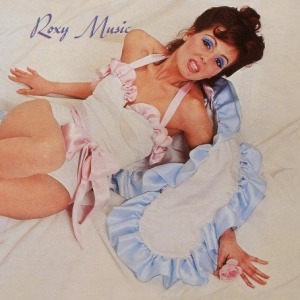
Part of the delay involved with publishing these entries in chronological order is that certain albums need longer to sink in than others. I’ve pulled out Roxy Music’s 1972 debut LP a few times, listened to it all the way through, and thought “That’s a great album, but I’m at a loss for what to say about it.” It’s considerably easier to digest a Gang of Four EP or a Regulator Watts LP in one sitting since they’re in more specific genres that I’m familiar with (post-punk and DC post-hardcore, respectively), whereas my experience with glam-rock is limited to big names like Bowie, T. Rex, and Roxy Music / Brian Eno. When I checked out online reviews to see the critical appraisal of Roxy Music, I came across this sassy Robert Christgau review:
From the drag queen on the cover to the fop finery in the centerfold to the polished deformity of the music on the record, this celebrates the kind of artifice that could come to seem as unhealthy as the sheen on a piece of rotten meat. Right now, though, it's decorated with enough weird hooks to earn an A for side one. Side two leans a little too heavily on the synthesizer (played by a balding, long-haired eunuch lookalike named Eno) without the saving grace of drums and bassline. B+
That is some serious burnsauce on Eno, a personal attack that of the kind I got in huge trouble for doing in a live review during my Signal Drench days. (Specific reference: saying that the male bassist of an indie-pop group, Mondo Crescendo, looked like a female Matthew Sweet. The female singer of that band, also the bassist’s girlfriend, did not respond kindly to this aside, and compared my review to the Spanish Inquisition. Was it mean? Sure. Was it true? Yes.) Similar pain for Kari-Ann Muller, the female cover model, who later married Mick Jagger’s brother. I agree with most of the discussion of the aesthetics of the album—its glam sheen is artificial, sure, especially Bryan Ferry’s curious vocal trills, but it’s mesmerizing in its off-kilter way. I prefer Eno left to his own devices, but the synthesizer on side B isn’t distracting. Overall, Roxy Music is more consistent than Stranded, but none of the songs stood out to me as much as “Street Life,” “Mother of Pearl,” or “Song for Europe.” I suspect after a few more listens, “Re-make/Re-model,” “Virginia Plain,” and “The Bob (Medley)” will equal those favorites, but I’ve accepted that my appreciation of Roxy Music will be a very gradual process.
90. Ornette Coleman– The Shape of Jazz to Come LP – Atlantic, 1959 – $6.50

It’s embarrassing that I’ve gone this long without picking up a copy of The Shape of Jazz to Come, the first jazz album that gave me the sense of “I’ve got it!” that I kept hoping would hit me when I picked up a classic from Miles Davis or John Coltrane. Looking back, it’s strange that this album hit me, since I’m sure that part of its appeal is being able to recognize the jazz conventions that it casts aside, but perhaps the prior emphasis on chord patterns was my stumbling block.
Translating my eureka moment to words is a rather daunting task, so I’ll just mention a few things that still stand out to me. 1. The connection between Ornette Coleman and Don Cherry, especially on “Lonely Woman,” is astounding. It’s hard to imagine that Coleman could have pushed jazz in this direction without a partner who could speak his newfound language. 2. The beginning of “Peace,” which is far quieter and harmonious than the two tracks which preceed it, could not embody its title more. 3. Billy Higgins’ drumming is constantly active. When he gets a drum solo at the end of “Focus on Sanity,” it feels overdue. 4. Much is made of the lack of a pianist providing a chord structure, but Charlie Haden’s bass lines are more than enough of a foundation. Between Haden and Higgins, I never feel like Coleman and Cherry are flying completely off the rails. 5. The very idea of unpredictable melodies seems impossible, yet strains from this album are still running through my head. That’ll do for now.
91. Wipers – Land of the Lost LP – Restless, 1986 – $12.50

I’d never run across a non-reissue Wipers LP before this trip, but I had my choice of a just-in copy of Land of the Lost for $12.50 or a regularly filed copy of Follow Blind for $9.50. I chose Wipers’ fourth album over their fifth for a few reasons—the cover’s a thousand times more interesting (reminding me of Men at Work’s Cargo, an album I pored over as a youth), the music’s closer in style to 1983’s Over the Edge, and Mark Prindle gave it eight out of ten to Follow Blind’s mere six of ten. Two more points! That’s only $1.50 per point.
Typical to mid-80s Wipers, side A is filled with blues-y hard-rockers like the title-track, side B is filled with more slow-simmering fare like “Nothing Left to Lose” and “Different Ways.” I prefer the latter, since there’s a broader spectrum of guitar tones, and Greg Sage’s guitar tones are what hooked me on the Wipers. Prindle’s dead-on about weaknesses of the album—it’s just not as creative, as inspired as its predecessors, and some of it comes across as Wipers-by-numbers. Since that issue intensifies on Follow Blind and Sage’s other late 1980s releases, Land of the Lost may be the second-to-last Wipers LP I buy. (Someday I’ll get Is This Real? and give it a real shot, but I’m not in any rush.) Too much of Sage’s post-Youth of America output chooses to mirror the less interesting half of that record (“Taking Too Long,” “Can This Be,” and “Pushing the Extreme”), rather than the epic guitar explorations of the title track, “When It’s Over,” and “No Fair.” I’m sure there are good songs on The Circle and Silver Sail, but Land of the Lost seems to be the start of the descent.
93. Brian Eno – Music for Films LP – E.G., 1978 – $9.50
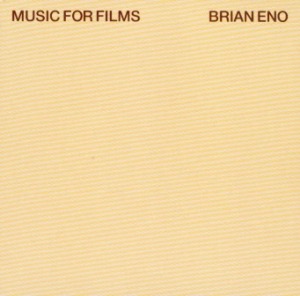
After my overwhelming enjoyment of the recently purchased Apollo: Atmospheres and Soundtracks, I was eager to continue filling out my collection of Brian Eno’s ambient releases. I had my choice between Music for Films or two different copies of the Eno/Cluster collaboration Old Land (which, as I learned later, is a compilation of the highlights from their two previous LPs, 1977’s Cluster and Eno and 1978’s After the Heat), but I opted for the former because I knew what I would get. As it turns out, that might not be the best thing.
Music for Films is comprised of eighteen short pieces intended to be the incidental music for imaginary films. Maybe my imagination was lacking today, but few of these songs are particularly evocative. I’d much rather hear some of the shorter instrumentals from Another Green World (“The Big Ship” especially), some of which were included in the original pressing of Music for Films.
93. Gang of Four – Yellow LP – Warner, 1980 – $4.50
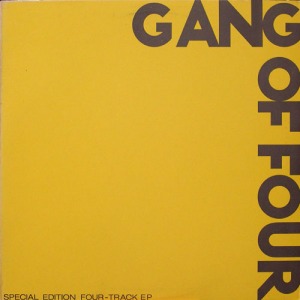
My Gang of Four collection is telling: there’s the wheat (their first three LPs: the superb Entertainment!, the solid if dry Solid Gold, and the mixed bag Songs of the Free) and the chaff (a needless remix 12” for “I Love a Man in Uniform,” their 1984 live album, At the Palace). Most GO4 sections are filled with the latter, whether it’s their 1983 album Hard, its accompanying single for “Is It Love,” or that ubiquitous “I Love a Man in Uniform” EP. Yellow, a 1980 EP that was included as bonus tracks for the reissue of Entertainment, may very well be the last piece of wheat left out there, unless the Another Day / Another Dollar EP suckers me into buying some live recordings along with its two exclusive songs.
Of Yellow’s four songs, two appear in re-recorded form on Solid Gold, although “Outside the Trains Don’t Run on Time” fits in with Entertainment!’s razor-wire aesthetic. “He’d Send in the Army” works better with Solid Gold’s comparative heft. The flip side features two older songs, “It’s Her Factory,” a melodica-heavy song that drags a bit, and the ironically chipper “Armalite Rifle,” which ranks as the highlight of the EP. Mixing the old with the new is less enticing nearly 30 years later, but between “Armalite Rifle” and an excellent version of “Outside the Trains Don’t Run on Time,” I got my money’s worth.
I’m still never buying Hard.
94. Regulator Watts– The Aesthetics of No Drag LP – Slowdime/Dischord, 1997 – $4.50
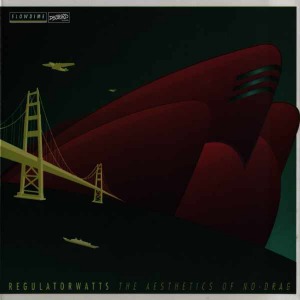
Credit the strength of Kerosene 454’s At Zero for me taking a chance on another peripheral mid-1990s DC group issued on Slowdime/Dischord. I wish I could also credit Hardcore for Nerds’ remarkably thorough exploration of the Hoover family tree for this purchase, but I found it after the fact. It did remind me that: 1. I should really check out Hoover already; 2. I’m familiar with Abilene, another Hoover offshoot; and 3.Hoover bassist Fred Erskine was excellent on the instrument in June of 44 (his vocal turns, however, were less than stellar). Only Hoover singer/guitarist Alex Dunham is present in Regulator Watts, although drummer Areif Dasha Sless-Kitain did a tour of duty in fellow DC post-hardcore merchants Bluetip.
The Aesthetics of No Drag is filled with such trickle-down DC economics; from its stylish Jason Farrell (of Bluetip and Retisonic fame) designed artwork, to Alex Dunham’s occasional vocal proximity to Fugazi’s Guy Picciotto and Girls Against Boys’ Scott McCloud (only on “Pemberton Red,” but it’s a telling rumble), and to the immediately evocative jagged riffs, Regulator Watts is a DC band through and through. The opening track “Mercurochrome” shows absolutely no mercy with its relentless blast of noisy post-hardcore fury, but later songs like “The Ballad of St. Tinnitus” take a more dynamic approach, punctuated of course with strangled guitar lines and shredded vocal cords. The atonal edge of these songs wears on me after a while, but the trickles of melody tide me over. Regulator Watts stress the hardcore half of post-hardcore, whereas I prefer the post-, but there are enough moments of convergence to name The Aesthetics of No Drag a worthy buy.
95. King Kong – Me Hungry LP – Drag City, 1995 – $6.50
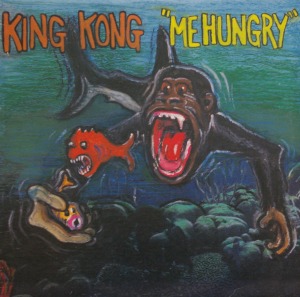
King Kong’s a strange, near mythical figure at the fringes of 1990s indie rock, a downright curious Slint offshoot whose descriptions in The Trouser Press Guide to ’90s Rock, the All Music Guide, and message boards all emphasize a goofy, childlike approach to music and a stylistic kinship to early B-52s albums, i.e. the exact opposite of Spiderland’s refined atmosphere. I knew I wouldn’t find any of the post-rock featured on more prominent Slint offshoots like The For Carnation and Papa M (hell, drummer Britt Walford plays on the Breeders’ Pod), but curiosity got the best of me. I had to check out what Tweez-era bassist Ethan Buckler left the group to pursue.
Well.
Me Hungry (deep breath) is a concept album/opera about a caveman and a yak confronted with the oncoming ice age, a cave woman, and a sabre-tooth tiger. Amy Greenwood’s likeable female vocals narrate the story, but Ethan Buckler sings all of his lines in character, meaning that you hear a lot of “Me fear the sabre-tooth tiger” sung with a straight-face. The stripped-down rhythm-and-blues backing is strangely austere and downright compelling on the instrumental beginning to “The Crow,” but it mostly serves to move the whole caveman opera along. I’d usually complain that such novelties should be limited to a seven-inch—ideally an etched, single-sided seven-inch—but me require character development and plot, so I’ll let the LP length slide.
For most Homo sapiens, Me Hungry is best viewed as that curious footnote you never get around to referencing, but if you must hear one Slint-related concept album about a caveman and a yak… uh… good luck finding any other options.
|
|
As I mentioned in the Breeders/Unrest entry, virtually every trip to Looney Tunes offers some long out-of-print album that I’m thrilled to find. This time it was the Mekons’ Fear and Whiskey, their finest album and an LP I’d been searching for since I first heard the group. Judging by Discogs prices, $15 looks like an entirely reasonable price for the album. Hot Snakes’ Automatic Midnight was a leftover from my previous visit.
One note on Looney Tunes: their just-in bin never contains anything exciting. New stock seems to be filed into the letter sections fairly quickly, so things like these Mekons LPs pop up as nice surprises.
86. Mekons – Fear and Whiskey LP – Sin, 1985 – $15
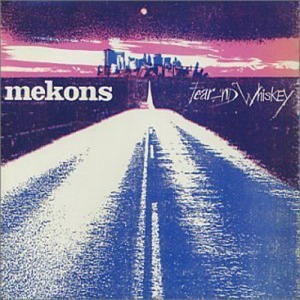
Fear and Whiskey is the undeniable classic of the Mekons’ catalog, a point substantiated by a glowing Pitchfork review of its Touch & Go reissue and a somewhat more restrained Dusted take on the album. Both reviews cover the socio-political context surrounding the album’s creation, but I’ll recap briefly. The Mekons were a loose collective of leftist post-punks that formed in 1977 in Leeds (alongside Gang of Four, who provided them with the instruments for their first LP) but had splintered apart by the early 1980s. The group reformed in full during the 1984-1985 UK Miners’ Strike, playing shows in support of the striking union and debuting their newfound combination of punk and country. (Whether this record is the official start of alt-country is debateable; my feeling is that current-day alt-country bands sound far more like Uncle Tupelo, not the Mekons.) Fear and Whiskey encapsulates that era of British and American political unrest and the class dominance of both Thatcher and Reagan. It’s by no means limited to that era—a period of British history I know far too little about—and like other great politically inspired records, it speaks to countless other time periods as well.
What impresses me most about Fear and Whiskey, especially after encountering a few other stray Mekons albums, is its focus. The Mekons’ stylistic restlessness is both endearing and infuriating: it’s the sign of a band that continues to challenge the notions of its own aesthetics and refuses to take itself too seriously, but also over-indulges in irritating genre explorations. At only ten songs and thirty-five minutes, Fear and Whiskey leaves those indulgences to its b-sides. The mix of country and western, punk, and Irish folk is inspired and consistent, even when one of those elements comes to the forefront. Like W. H. Auden’s WWII-era poems, Fear and Whiskey is shaped by the urgency of its historical context.
This discussion probably positions Fear and Whiskey as an album to be admired or appreciated rather than enjoyed, but that’s not the case. Even on the more explicitly political tracks, like “Trouble Down South” and “Abernant 1984/1985,” elements like Sally Timms’ lilting background vocals and rockabilly guitar leads keep the songs alive. Less specifically historical songs like “Chivalry” and “Last Dance” linger with impossible romances and beaten-down spirits even as their melodies and Susie Honeyman’s fiddle lines keep the tone upbeat. It’s an album great enough to work on all of these levels without stretching itself thin.
87. Mekons – Crime and Punishment LP – Sin, 1986 – $12
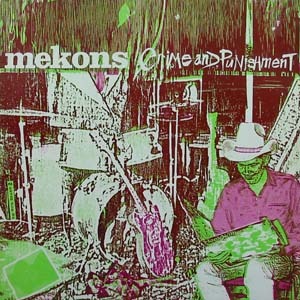
A four-song EP originally broadcast as a Peel session, Crime and Punishment is a nice companion piece for Fear and Whiskey, which is exactly what 75% of it became on the 1989 Original Sin compilation along with six other bonus tracks. (Non-vinyl obsessed Mekons fans: that is your cue to buy one CD instead of four LPs. It’s out of print, but so are these LPs.) As I just mentioned, Fear and Whiskey is great in part because it’s lean and focused, and while these songs—three originals and a Merle Haggard cover—aren’t unfocused, exactly, they work better here than as padding for the album. The main difference is the intensity; Fear and Whiskey occasionally ratchets up the unease brewing underneath the surface to a palpable edge, whereas these songs, even though they’re ostensibly about drinking, prison, and misery, manage to maintain a ramshackle joy that passes by easier. Completist note: the Merle Haggard cover isn’t included on Original Sin, so if you’re interested in Mekons’ country covers, you’ll have to track Crime and Punishment down.
88. Hot Snakes– Automatic Midnight LP – Swami, 2000 – $12
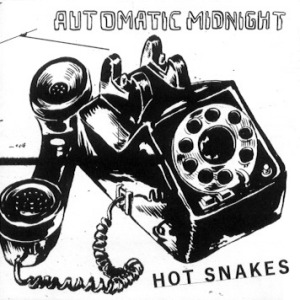
I ranked Automatic Midnight at #18 on my list of my favorite 40 albums from 2000 to 2004, above Hot Snakes’ later two albums, and I stand by that preference. Am I alone in that sentiment? Suicide Invoice is a close second, to be sure, but the straight-ahead force of Automatic Midnight works so well with Rick Froberg’s unhinged vocals. I’ve heard that John Reis played all (or at least most) of the guitars for the album, which might make Rocket from the Crypt haters cringe, but the garage-rock-from-hell approach of “Let It Come” and “No Hands” is perfect for lines like “Yeah cut ’em off me / I could do this with stumps.” The distorted keyboard/organ on “Salton City” and the Reis-sung “Mystery Boy” (homage to the Wipers song “Alien Boy”?) adds grime to the swaggering propulsion of each song. Many of the songs eschew the dexterous guitar interplay of past Reis/Froberg collaborations for maximum bludgeoning force, often accomplished through a doubled rhythm guitar. Automatic Midnight would be the perfect soundtrack for a modern Western set in a dying city of industry, mixed with the requisite instrumental bits of Godspeed You! Black Emperor. The only challenge would be keeping Nick Cave and Warren Ellis from stealing the soundtrack.
|
85. Future of the Left – Travels with Myself and Another LP – 4AD, 2009 – $15
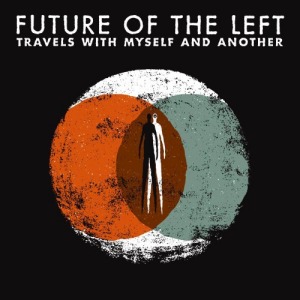
Have MP3 album leaks ruined the excitement of the official release date? Most would say yes, since hearing the music for the first time is more tantalizing than ripping open the packaging to extract its already familiar contents, but my experience with Future of the Left’s sophomore album, Travels with Myself and Another, argues otherwise. I’d only dabbled with Mclusky (a mistake I’ve since rectified) and completely missed Future of the Left’s 2007 excellent debut, Curses, but overwhelmingly positive word-of-mouth caused me to check out the early leak of Travels. The sarcastic AC/DC bombast/catharsis of “Arming Eritrea” immediately suggested that this would be one hell of a record, a hypothesis proven accurate over twelve lean, brutal, and funny cuts, and in turn, I kept a close eye on its pending release.
Sure enough, I headed out to Newbury Comics to grab the album on its official release, opting against any other purchases so I could give this fresh wax a few dedicated spins. Hearing the massive rhythm section of “You Need Satan More Than He Needs You” blare though another rainy summer day in Boston made the song sound like a two-ton anvil, focusing my attention on previously overlooked backend songs like “Stand by Your Manatee” and the dinosaur rock of “Yin/Post-Yin” pulled the album together as a whole, and hearing the acoustic introduction of “Lapsed Catholics” transition into its throttling electric riff on my home stereo gave the juxtaposition new depth. Reading the lyric sheet was similarly revelatory, cluing me in that “I know my own worth / I’m an adult / I’m an adult,” which was quoted on numerous blogs as a great line, was actually “And then I don’t / And then I don’t.” Whereas I previously anticipated that Travels would rank among my favorite albums of the year, hearing the record in a focused listening environment after making an occasion to pick it up solidified its spot in my top five, if not top overall.
I’ve since caught Future of the Left live twice, picked up a t-shirt and a copy of Curses on LP at the first show, put the 3CD edition of McLuskyism on my shopping list, and scoured eBay for vinyl copies of Mclusky’s Do Dallas and The Difference Between Me and You Is that I’m Not on Fire. I stress all of this rampant consumerism in part because FOTL singer Andy Falkous has been vocal in his disappointment of advance leaks and listeners’ sense of entitlement with regard to free music*, but in my case, Travels’ early leak was my gateway to unfettered Falkous fandom. I can understand being frustrated about an early mix or an unmastered copy of an album being leaked, since that messes with people’s initial impression of an album, but advance leaks are a near certainty for any major release. The key is for the music to match, if not exceed the listener’s expectations, a task Future of the Left blew off the table. If the transition between the old era of release date excitement to the new epoch is essentially “I’m running out to buy this album to find out if it’s as good as I hoped” turning into “I’m running out to buy this album because it’s as good as I hoped,” well, that’s progress. It should encourage artists to make great, consistent albums, not singles backed with filler. If any up-and-comers need an intro course on what makes a great album, I suggest running out and buying Future of the Left’s Travels with Myself and Another.
* I completely agree with Falkous’s hatred of the sense of entitlement among contemporary listeners for purely free music, but people with an “I’ll support the artist” ethic (like myself) still exist in this culture. The filesharing era created a class of listeners liable to brag about how they’ve never purchased a record but “own” thousands of albums on an external hard drive. Perhaps Falkous’s anti-leak rant is one way to address that class’s false sense of entitlement, but my logic is that advanced leaks can help create new fans, like myself, and fighting an unchanging tide might cause more damage than it’s worth (e.g. Metallica and Napster).
|
|
Similar to both In Your Ear locations and their now-departed Cambridge sister store, Looney Tunes focuses on collector-oriented used vinyl, “collector-oriented” being a euphemism for “highly priced,” but don’t let that deter you. Unlike Rrrecords in Lowell or Mystery Train in Gloucester, you’re not going to find any hidden gems in the $5 range since virtually every record is at least $8, if not $10, but the turnover in stock at Looney Tunes makes it worth a regular visit. Are Berklee College of Music students selling off their prized 1990s indie/alternative LPs to stay afloat? Is their prime Boston real estate getting them better rock trade-ins than In Your Ear and Stereo Jack’s? Do they have a backroom filled with desirable LPs they slowly mete out to keep customers coming? Beats me, but it seems like every time I venture over the Mass. Ave bridge I end up getting sucked into buying a $15 to $25 record I won’t find anywhere else.
Past finds included Comsat Angels’ Waiting on a Miracle LP (I justified the $25 price tag by thinking of the cost of shipping for the import copies floating around eBay), the Afghan Whigs’ What Jail Is Like LP (with alternate tracks than the CD—they have another copy now if you’re interested), Cocteau Twins’ Treasure (a reasonable $10), the original pressing of Polvo’s Cor Crane Secret LP (a few months before the reissue came out at the same price), and Rocket from the Crypt’s Hot Charity LP. Not all of these purchases made my wallet sigh, but at best I paid what I thought they were worth, not more, not less. It’s just not as exciting to find something that’s accurately priced.
I usually can’t justify buying more than one or two LPs at a time from Looney Tunes (especially if I’ve coordinated my visit with a trip to the Newbury Comics location a few blocks away) so the albums I’ve left behind have been just as memorable. I made a mental note that I passed on another $89 worth of albums this time, including a few out-of-print indie rock records, a few original post-punk pressings, and a copy of Neil Young’s Zuma (which I see often enough to pass up). By the time this write-up is posted, I may have already gone back to grab a few of those records, but the competitive record shopper in me can’t divulge too many active finds. [Editor's note: I most certainly did pick up at least one of those other LPs.]
83. The Breeders– Pod LP – 4AD, 1990 – $20

I was all ready to discuss my surprise that Pod hadn’t earned a reissue pressing yet, even though Pixies LPs seem to be selling well, when I noticed that Plain Recordings was set to release a 180 gram reissue on June 23rd. This news removes some of my excitement about finding this album, but the $20 price tag isn’t too much more than the $18 most Plain reissues run. That’s what I get for checking Discogs and eBay on my iPhone, but not Google for a potential reissue. It’s still pretty awesome finding an album like this one that I never, ever see in stores, and getting the original pressing.
As for Pod itself, I never bought it on CD and I’d never listened to it all the way through, something that I’ve since rectified. Anyone hoping for the infectious alt-pop of “Cannonball” or “Divine Hammer” might be disappointed by the cold, eerie atmosphere of this record, but like Mark Prindle, I find Pod’s aesthetic and songwriting to be far superior to Last Splash. (I’m not even going to feign more than a skim of either Title T.K. or Mountain Battles.) It still blows my mind that Slint drummer Britt Walford joined the group for Pod and the Safari EP, since Slint was a completely unknown entity at the time, but a Steve Albini recommendation goes a long way. It’s even stranger that Walford used a pseudonym in the group (Shannon Doughton) and left before Last Splash because he was reticient about being associated with them, but that’s the difference between early 1990s indie rock and modern day indie rock.
84. Unrest – “Cath Carroll” + 2 7” – Teenbeat, 1993 – $6
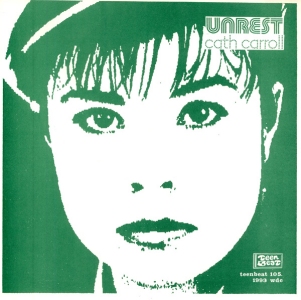
Amazon’s list of the top 100 indie rock records of all time prompted a resurgence for Unrest, since Imperial F.F.R.R. ranked #5 on said list, above such notables as Pavement, Sonic Youth, Yo La Tengo, and every other indie rock artist other than Guided by Voices, Neutral Milk Hotel, Slint, and Liz Phair. I could spend a few hours and a few thousand words dismantling Amazon’s list out of pure habit (Portugal the Man? Joan as Police Woman? The Black Angels?), but the simple reminder that this list is from Amazon, a company aiming to sell more indie rock records, not dramatically alter the indie rock canon, is enough to cull the urge. For now.
This uptick in Unrest discussion caused me to finally check out both Imperial F.F.R.R. and Perfect Teeth, records I’d long ignored because of Bridget Cross’s early tenure in Velocity Girl and my wariness that a sugar rush/crash would accompany a spin of Unrest’s indie pop/rock. That assumption wasn’t entirely off—songs like “Cath Carroll” and “Make Out Club” charge by with cotton-candy hooks and hyper-strummed chords—but Unrest is just as good, if not better, at slowly developing, but equally melodic songs like “Imperial” and “Breather X.O.X.O.” While I wouldn’t immediately place them at the top of the indie rock pecking order, I’ve enjoyed what I’ve heard enough to grab this out-of-print single, which features the aforementioned pep of “Cath Carroll,” an alternate take on “So Sick,” and a pleasant non-album track called “Capezio B.” Unrest’s discography is littered with enough singles and EPs that I won’t make this a habit, but Imperial F.F.R.R. and Perfect Teeth are now in my want list.
|
|

